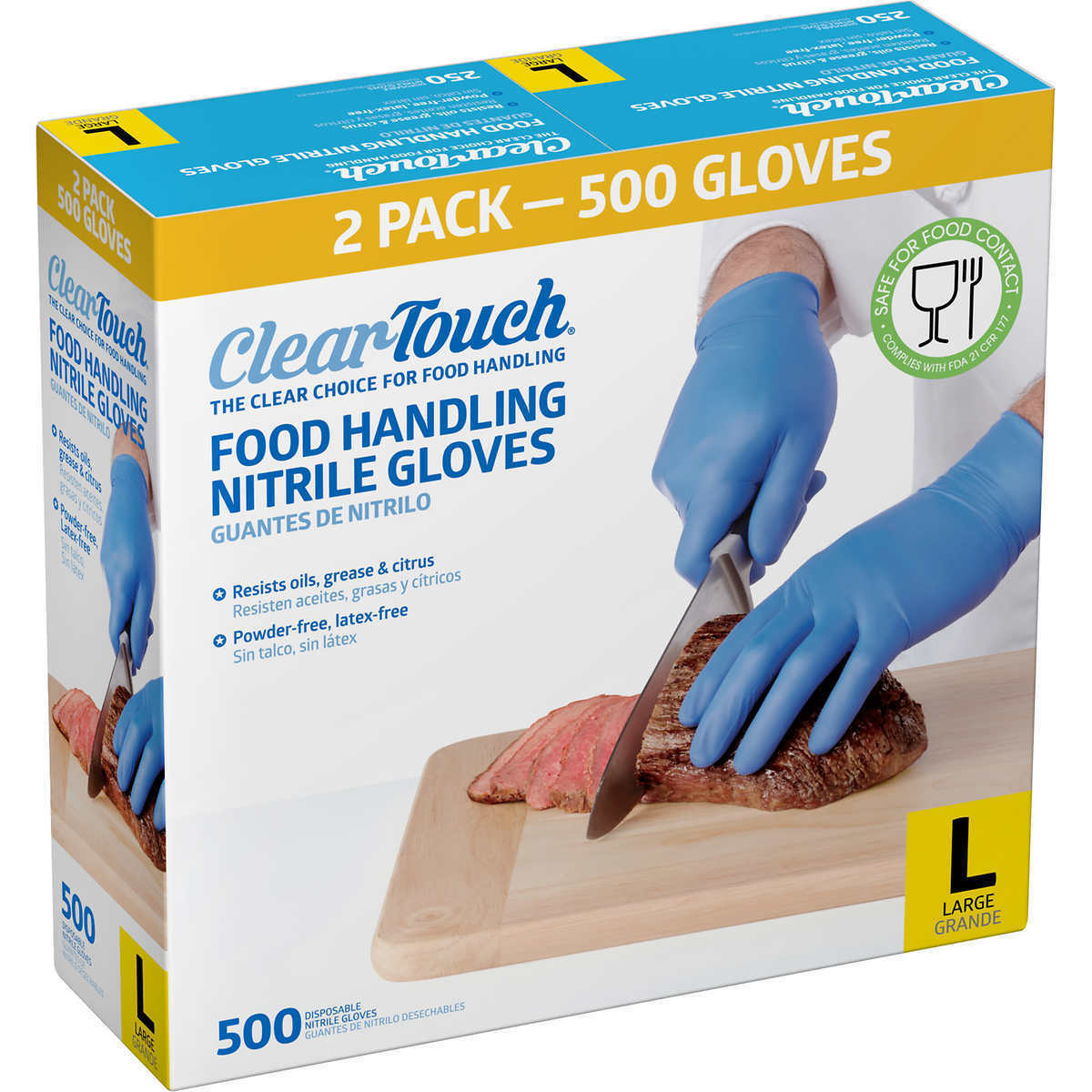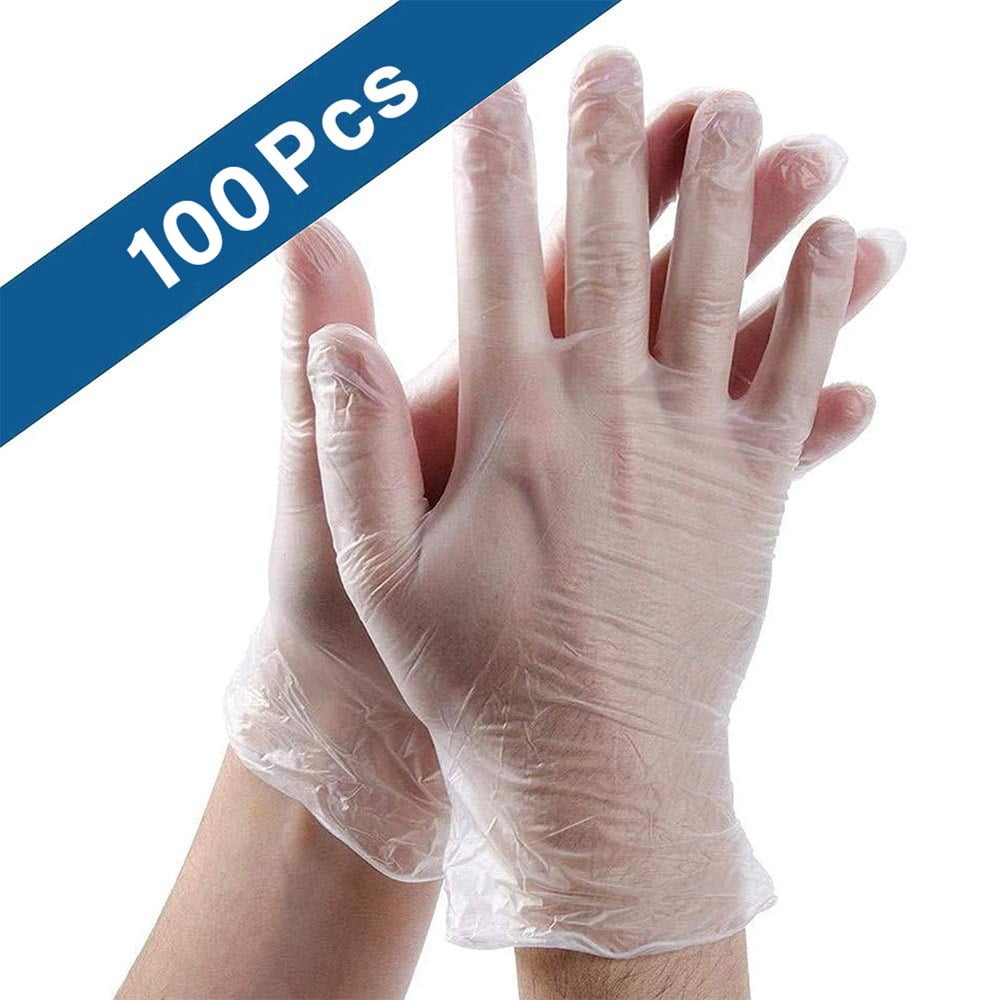Food handling gloves play a pivotal role in maintaining the safety and hygiene of food, ensuring the well-being of consumers and upholding the integrity of the food industry.
From preventing cross-contamination to protecting both the food and the wearer, food handling gloves serve as an indispensable tool in the culinary landscape. This comprehensive guide delves into the types, importance, proper usage, regulations, and innovations surrounding food handling gloves, providing invaluable insights for professionals and consumers alike.
Types of Food Handling Gloves

In the realm of food handling, maintaining impeccable hygiene is paramount, and food handling gloves play a pivotal role in safeguarding food from contamination. Delving into the diverse range of gloves available, we explore their materials, benefits, drawbacks, and optimal applications to ensure the utmost food safety.
The choice of glove material depends on the specific tasks and potential hazards involved. Here’s a comprehensive breakdown of the most commonly used materials and their characteristics:
Natural Rubber (Latex)
- Highly elastic and comfortable to wear for extended periods.
- Excellent resistance to punctures and tears.
- May cause allergic reactions in some individuals.
- Suitable for general food handling, cleaning, and disinfection tasks.
Nitrile
- Synthetic material with high puncture and tear resistance.
- Resistant to oils, greases, and chemicals.
- May be less flexible than latex gloves.
- Ideal for handling greasy foods, meats, and cleaning with harsh chemicals.
Vinyl
- Inexpensive and disposable.
- Resistant to acids and bases.
- Less durable than latex or nitrile gloves.
- Suitable for short-term tasks, such as food preparation and serving.
Polyethylene
- Thin and lightweight, providing excellent dexterity.
- Resistant to moisture and punctures.
- May tear easily.
- Ideal for delicate tasks, such as handling pastries and baked goods.
Importance of Using Food Handling Gloves
Maintaining food safety and hygiene is paramount in the food industry. Food handling gloves play a crucial role in this regard, safeguarding both the food and the individuals handling it.
Prevention of Cross-Contamination
Gloves act as a barrier, preventing the transfer of harmful bacteria and allergens from the hands to the food or vice versa. This is especially important in environments where multiple food items are handled, as it minimizes the risk of cross-contamination.
Protection for the Wearer
Gloves also protect the wearer’s hands from potential hazards, such as chemical irritants, hot surfaces, and sharp objects. By forming a physical barrier, gloves reduce the risk of cuts, burns, and exposure to harmful substances.
Consequences of Not Using Gloves
Failure to use food handling gloves can have severe consequences. Cross-contamination can lead to foodborne illnesses, compromising the health of consumers. Moreover, unprotected hands can become a source of contamination, potentially spreading bacteria and allergens throughout the food preparation area.
Proper Usage and Maintenance of Food Handling Gloves
Maintaining proper hygiene standards in food handling is crucial, and food handling gloves play a significant role in preventing contamination. Understanding how to use and maintain these gloves correctly is essential to ensure their effectiveness.
When wearing gloves, ensure your hands are clean and dry. Inspect the gloves for any tears or punctures before use. Put on the gloves by pulling them over your hands, covering your wrists. Avoid touching the inside of the gloves.
Change gloves frequently, especially after handling raw meat, poultry, or fish. Cross-contamination can occur if gloves are not changed, leading to the spread of harmful bacteria. When removing gloves, grasp the cuff and pull them off, turning them inside out to prevent contact with the outer surface.
For reusable gloves, proper cleaning and sanitization are essential. Wash the gloves thoroughly with hot, soapy water, then sanitize them using an approved sanitizing solution. Air-dry the gloves completely before storing them in a clean, dry place.
Importance of Proper Glove Usage and Maintenance, Food handling gloves
- Prevents cross-contamination and the spread of harmful bacteria.
- Maintains food safety and quality.
- Complies with health and safety regulations.
Regulations and Standards for Food Handling Gloves

Food handling gloves are essential for maintaining food safety and hygiene in the food industry. To ensure their effectiveness and reliability, various regulations and standards have been established to govern their use.
These regulations and standards provide guidelines for glove materials, construction, and performance, ensuring that they meet specific requirements for food contact applications.
Regulatory Bodies
Regulatory bodies play a crucial role in enforcing compliance with these standards. They conduct regular inspections, monitor glove manufacturers, and take necessary actions against non-compliant products.
Glove Materials and Construction
Regulations specify the acceptable materials for food handling gloves, such as nitrile, latex, or vinyl. These materials must be non-toxic, odorless, and free from harmful substances that could contaminate food.
The construction of gloves is also regulated, including their thickness, durability, and fit. Gloves must be designed to provide a snug fit without being too tight or loose, ensuring dexterity and preventing tears or punctures.
Performance Standards
Performance standards evaluate the effectiveness of food handling gloves in preventing food contamination. These standards include tests for barrier properties, such as resistance to bacteria, viruses, and chemicals.
Gloves must meet specific performance criteria to ensure they effectively protect food from cross-contamination and maintain food safety.
Choosing the Right Food Handling Gloves

Selecting the appropriate food handling gloves is crucial to ensure food safety and hygiene. Consider these factors when choosing gloves:
- Material:Nitrile, latex, and vinyl are common materials used in food handling gloves. Nitrile offers excellent puncture resistance, while latex provides a snug fit and dexterity. Vinyl is cost-effective and suitable for low-risk tasks.
- Size:Gloves should fit snugly without being too tight or loose. Measure your hand circumference and refer to the manufacturer’s sizing chart for the correct size.
- Fit:Gloves should provide a secure fit without restricting movement. Look for gloves with textured fingertips for enhanced grip.
- Intended use:Consider the specific tasks and potential hazards involved when choosing gloves. For example, gloves with a higher puncture resistance are suitable for handling sharp objects.
Consult with industry experts or manufacturers for guidance on selecting the most appropriate gloves for your specific needs.
Innovations in Food Handling Gloves
Advancements in materials science and manufacturing techniques have led to significant innovations in food handling glove technology, enhancing performance, user experience, and safety.
New materials, such as nitrile and polyethylene, provide improved durability, chemical resistance, and puncture resistance. These materials are also more flexible and comfortable to wear for extended periods.
Advanced Designs and Features
Innovative glove designs include textured surfaces for enhanced grip, extended cuffs for better protection, and antimicrobial coatings to reduce the risk of contamination.
Additionally, some gloves incorporate sensors that monitor temperature and humidity levels, providing real-time data on food safety conditions.
Potential Future Developments
Future developments in food handling gloves may include the use of biodegradable and compostable materials, as well as the integration of advanced technologies such as nanotechnology and artificial intelligence.
These advancements will continue to improve the safety, efficiency, and sustainability of food handling practices.
Case Studies and Best Practices
The use of food handling gloves has been widely adopted in various industries, leading to significant improvements in food safety and hygiene practices. Here are some real-world examples and best practices that demonstrate the positive impact of glove usage.
In the foodservice industry, a leading restaurant chain implemented a comprehensive glove-wearing policy. The chain’s rigorous training program emphasized the proper use and maintenance of gloves, including frequent glove changes and handwashing. As a result, the chain experienced a significant reduction in foodborne illness outbreaks and improved overall food safety compliance.
Case Study: Healthcare
In the healthcare sector, a hospital implemented a glove-wearing protocol for all staff handling food and beverages for patients. The protocol included mandatory glove usage, handwashing before and after glove changes, and proper disposal of gloves. The hospital observed a notable decrease in patient infections associated with foodborne pathogens.
Best Practice: Glove Selection
Selecting the appropriate type of glove for specific food handling tasks is crucial. For instance, disposable gloves made of nitrile or latex offer excellent protection against bacteria and viruses. In contrast, reusable gloves made of silicone or neoprene provide durability and resistance to chemicals and heat.
Impact on Foodborne Illnesses
The use of food handling gloves has significantly reduced the incidence of foodborne illnesses. By preventing direct contact between food and bare hands, gloves minimize the transfer of pathogens and contaminants, contributing to a safer food supply.
Consumer Protection
Food handling gloves play a vital role in protecting consumers from foodborne illnesses. By ensuring that food is handled in a hygienic manner, gloves help maintain the integrity and safety of food products, reducing the risk of food poisoning and other health hazards.
Conclusion
In conclusion, the use of food handling gloves is essential for maintaining food safety and hygiene in the food industry. By understanding the types, importance, proper usage, regulations, and innovations in food handling gloves, food handlers can effectively prevent cross-contamination, protect consumers from foodborne illnesses, and comply with industry standards.
It is crucial to implement best practices and stay updated on industry regulations to ensure the safety and quality of food products. Food handlers should prioritize the use of food handling gloves, follow proper protocols for glove usage and maintenance, and actively seek knowledge and training to enhance their food handling practices.
FAQs
What are the different types of food handling gloves?
Food handling gloves come in a variety of materials, including latex, nitrile, vinyl, and polyethylene. Each material offers unique benefits and drawbacks, such as durability, resistance to chemicals, and comfort.
Why is it important to wear food handling gloves?
Food handling gloves prevent cross-contamination, protecting both the food and the wearer from harmful bacteria and viruses. They also provide a physical barrier against chemicals and other contaminants.
How should food handling gloves be properly used and maintained?
Food handling gloves should be worn snugly and changed frequently, especially when handling different types of food or after touching contaminated surfaces. They should also be disposed of properly to prevent the spread of bacteria.
